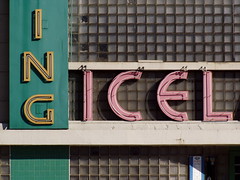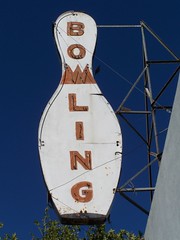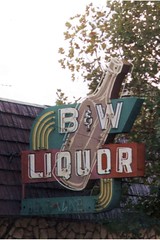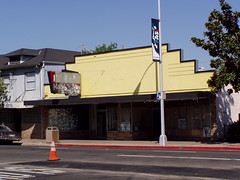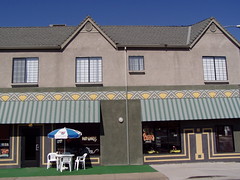
Although I love to explore Northern California, my budget has limited me to day trips. To overcome this, I invested in a tent in July of 2007, and this was one of my first excursions with it.
I set off Saturday morning without even knowing how to get where I was going. I remembered a previous trip along the north shore of Clear Lake, and seeing signs for US 101 before that, and I figured that route would get me to the Mendocino Coast. So I took I-5 from Sacramento to Williams, then headed off on CA-20.
The drive up I-5, well familiar to me, was monotonous. Many small towns were announced as exits, but I've exited and investigated them in the past, and been disappointed. The Sutter Buttes began to appear on the right-hand side, reminding me of how close I was to Yuba City and Marysville, only they were to the east on the old Highway 99E route, while Intersate 5 follows the old Highway 99W route.
At Williams, everything changed. I left the freeway to follow CA-20, and started heading towards that coastal range that had paralleled my drive north. I've made this part of the drive once before, and had the same exciting experience I had this time. As the distant border to the valley approached, it became more interesting, and more real.
From a distance, it is a solid wall, but as you approach it, you see that it is not impenetrable to the automobile, although much of it is, thus the limited number of roads that wind their way through the coastal range. It is an undulating range of hills, with winding passages that one can climb relatively gradually. It was, both times, typical of a Northern California summer landscape, all golden hills dotted with oak trees.
Soon after passing the Oasis Grill, a place that from the looks of it I have to try some day, I came out at Clear Lake. That means following winding CA-20 along the north edge of CA-20 through resort communities, with variable speed limits, and usually some slow tourist driving in front of me well below that speed limit.
Once past the lake, it's a quick trip to US 101, which is beyond what I had traveled on this path before. I just assumed I would keep heading towards the coast, but found myself merging onto US 101 South, headed towards San Francisco. I took the first exit and for the first time checked a map.
I needed to head up US 101 North to take follow CA 20 West at Willits, so I did. Soon US 101 ended as a freeway, and turned into a two-lane highway. In Willits I saw one of the vintage motel signs I love to find, only I had already seen it before on Flickr, so my excitement was tempered. I still stopped to photograph it. Willits also has one of those lovely banner neon signs declaring the town's identity. Willits is apparently the "Gateway to the Redwoods." From my experience, that is accurate enough.
Heading west on CA 20, I came upon a winding stretch of road that caused me to ride the brakes often. The road twists back and forth through Jackson Demonstration State Forest, with towering coast redwoods casting everything at ground level into cool darkness. What is a demonstration forest? I have no idea.
Coming out of the Redwoods I approached CA 1, the Shoreline Highway, just at the southern end of Fort Bragg. I took a quick tour of Fort Bragg and fueled up, both with gasoline and lunch, before heading south along the coast to my destination, Russian Gulch State Park.
The park is named after the gulch and the river of the same name that runs through it out to the Pacific Ocean. There is a nice beach at the river outlet, dramatic coastal views, and acres of redwood forests filled with hiking trails. The highway crosses the gulch on a lovely arched bridge, which the one-lane road to the campground passes under.
I picked out my campsite, paid my $20, and set up my tent. Then I put on my hiking boots and headed off in the direction of the Fern Canyon Trailhead, but before I reached it, I saw the trailhead for North Trail. Checking the map I got from the front kiosk, I saw that this slightly longer trail meets up with Fern Canyon Trail and the Waterfall Loop trail that was my objective, so I started out on it, immediately climbing up switchbacks.
I set out at 3:00 and wasn't sure what the total distance was on this hike, so I was anxious to hike quickly so as to get back before it got dark, although I did have my new Gizmo headlamp with me. So I pushed myself, only stopping to photograph a mushroom. There were many mushrooms.

After the initial climb, the trail was flat, passing through the redwood forest. Redwood forests are always lovely, and if you haven't ever been in one, it would be reason enough to go. But I've hiked in them a number of times, and I had never visited the dramatic Mendocino coast before this trip. So as I reached junctions with other trails, I would check my map and my watch, and try to determine if I could get back in time to make it to the ocean by sunset.
After a long stretch of flat trail, I started descending, gradually at first, then more steeply. I could see the Fern Canyon Trail below--it is wide and paved. I reached the junction with it and the Waterfall Loop Trail, where there are bicycle racks and a picnic table. Bicycles are allowed on the Fern Canyon Trail, but not on the the Waterfall Loop Trail.
The sign showed one direction to the waterfall at 2.3 miles, and the other at .7 miles, so I took the short way. The trail involved a little more climbing, and was a bit sketchy for the non-hiker at points, with slick areas next to a steep drop-off, and some spots that had been eroded away entirely that I had to carefully pick my way around.

The waterfall was all that I could hope for, and was flowing nicely. I set up to take photos of it with my Gorillapod. It was much too dark in the redwood forest near sunset for a handheld shot. As I was shooting, a couple arrived with a tripod and a nice DSLR camera, and another couple soon arrived as well. I got to take a photo of the first couple with that DSLR.

I headed back the way I had come, the short way, rather than taking the loop. Once back at the junction, I took Fern Canyon Trail, which was signed as being a mile shorter than North Trail. It was also totally flat and paved, and I made good time. Such good time, in fact, that I made it back to the campground well before sunset.
I made it back early enough that I decided to run down to the town of Mendocino, two miles away, to pick up something to eat for dinner (which I had neglected to do earlier). Back at the park, I headed off to a picnic area I had not visited before to walk along the coast and get some shots as the sun went down. Afterwards I parked back at my campsite.
From there I headed off to a trail marked on the map along the edge of the coastline. I overshot it at first, and instead caught the sunset framed by the Shoreline Highway bridge (the photo at the top of this entry). I headed back and found it, along with a warning about this being mountain lion territory. Normally, I wouldn't be concerned, as I generally hike in the middle of the day. Mountain lions prefer to hunt in the dark, or in dim light, when their sensitive eyes give them a great advantage. That's why my cat tears around my apartment in the middle of the night. But it was dusk already, so the warning was a bit of a concern.

I hiked up a muddy and steep, but short, portion of trail, and crossed under the bridge, where there was graffiti featuring aliens. On the other side I soon came out along the coast with what I believe were cypress trees. I took a few pictures then headed back to camp. Just as I was about to reach the trailhead, I crossed a slick wooden bridge of sorts, and my feet slipped out from under me, by about a foot. My arms shot out so quickly that it hurt and I flailed my arms about, and somehow managed to not fall.
Back at camp in the dark, I chose to eat my sandwich in my car so I could turn on the radio and check on ALCS game 6 between Boston and Cleveland. The sandwich from Harvest Market, a frittata made with pancetta, onions, spinach, basil, sun-dried tomatoes, feta cheese, and garlic aioli, was one of the most delicious things I've ever tasted, although it was too big too finish. And my team was up 10-1 in the third inning, so I was feeling good.
I got even less sleep that night than on my last camping trip. When I was 17 I just threw my sleeping bag on the ground in the open air for a 4-night trip with my friends from high school, and had no trouble sleeping all night. But now my chronic back pain of 6 years makes it difficult to sleep even with a pad under my sleeping bag and a pillow. I'm not giving up, though.
As soon as there was the first hint of light, I headed out to brush my teeth, pack up my things, and disassemble the tent. I couldn't pack the tent away, as it was all wet. This time of year, everything in the park is damp all of the time. I just threw it loosely in the back seat to dry in my greenhouse on wheels, with the windows cracked slightly to let the evaporated moisture out.
I then repeated the two coastal hikes in the park I had made yesterday, only going farther, starting from the picnic area. Although it was light, the sun had still not popped over the horizon. I went out to a fenced-off area. The ground dropped away beyond the fence in a deep into a wide whole in roughly circular shape, at the bottom of which waves were surging in via a tunnel to the sea. An underground cavern had collapsed here, apparently. I'm afraid my photos didn't turn out well, so you'll just have to visit this natural wonder yourself. Walking back, it was a bit disconcerting knowing that there was a tunnel beneath me at some point flowing with water, that will inevitably collapse some day.

As I got back to the point of this small peninsula, I could see out a ways that the light was hitting the very top of the waves. The evening before I had seen the waves beating down ferociously and endlessly on the rocks, wearing them away. That morning it seemed to me that they were using the rocks as a springboard to leap into the air with delight to greet the return of the sun.
I returned to make the hike along the path with the warning about mountain lions, only this time I continued along the other side of the small peninsula back to where the trail closely parallels the highway before reaching a parking lot and heading out again. A couple of portions of trail had been eroded away, one requiring me to drop down and climb back up, and the other that I was able to jump across. From the parking lot I went out on another small peninsula before heading back.
My original plan had been to head to Van Damme State Park and take a longer hike into the redwood forest there, but I decided I would rather see as much of the coast as possible. So I headed down to Mendocino State Park, and walked all along the coast line there. There was only 1 vehicle in 1 of the 3 parking lots when I arrived, but people began arriving in large numbers as I kept walking. The ocean here is filled with large rock outcroppings that the waves beat upon and the birds alight on. There were many natural arches and caves. On the other side, the town of Mendocino was always visible.

From there I headed to Big River State Park, where Big River empties into the ocean. I must have been there close to low tide, as there was a massive beach. Then it was to the beach at Van Damme State Park, where there were many surfers and kayakers apparently getting ready, but none out on the water. Next, an overlook on a public easement. Then Navarro Point Preserve and Scenic Trail. If it feels like I'm rushing, it's because I was. I wanted to see as much as possible, but I also wanted to get home, especially since I was so tired from lack of sleep.

As I was approaching the junction with CA 128, which I planned to take back on the way to Ukiah, US 101, and CA 20, I came down a ridge with a dramatic view of an expansive beach and a river headed towards the ocean. It reminded me very much of Jenner and the Russian River, only without the town perched on the river. Rather than head off immediately on 128, I took a short jaunt over to Navarro Beach, part of Navarro River Redwoods State Park. This is where the Navarro River usually empties out into the Pacific Ocean, but at low tide, it was dammed up by the beach. Presumably the water would eventually build up enough to cross that stretch of sand, if the rising tide didn't breach it first. The other notable thing about this beach was the amount of driftwood. I've never seen anything anywhere approaching that amount of driftwood in my life.
Leaving the beach, I drove through the rest of the park. Like in Jackson Demonstration State Park, the road weaved through a redwood forest, but this time the curves and grades were far more gentle, and I didn't need to use my brakes. The road came out of forest into an agricultural area filled with vineyards and wineries and orchards and pumpkin patches.
On the outskirts of Booneville, I took a left on CA 253 over to Ukiah, a winding road with a stretch of 10% downhill grade. Just south of Ukiah, I got back on US 101, headed north to CA 20, stopped on 20 at Foster's Freeze in Lucerne for chili cheese fries and a shake, then went on to I-5, then south on I-5 to Sacramento, exhausted from the long journey and anxious to sleep on a soft bed.











